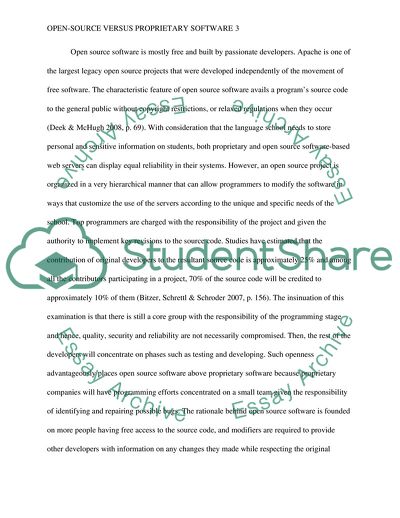Cite this document
(Open Source Versus Proprietary Software Coursework Example | Topics and Well Written Essays - 2000 words, n.d.)
Open Source Versus Proprietary Software Coursework Example | Topics and Well Written Essays - 2000 words. https://studentshare.org/information-technology/1807703-open-source-versus-proprietary-software
Open Source Versus Proprietary Software Coursework Example | Topics and Well Written Essays - 2000 words. https://studentshare.org/information-technology/1807703-open-source-versus-proprietary-software
(Open Source Versus Proprietary Software Coursework Example | Topics and Well Written Essays - 2000 Words)
Open Source Versus Proprietary Software Coursework Example | Topics and Well Written Essays - 2000 Words. https://studentshare.org/information-technology/1807703-open-source-versus-proprietary-software.
Open Source Versus Proprietary Software Coursework Example | Topics and Well Written Essays - 2000 Words. https://studentshare.org/information-technology/1807703-open-source-versus-proprietary-software.
“Open Source Versus Proprietary Software Coursework Example | Topics and Well Written Essays - 2000 Words”. https://studentshare.org/information-technology/1807703-open-source-versus-proprietary-software.


